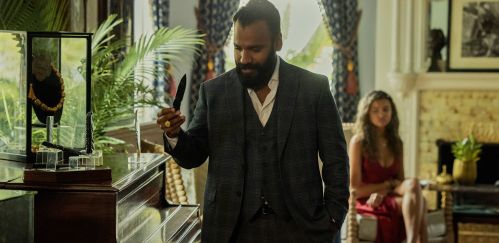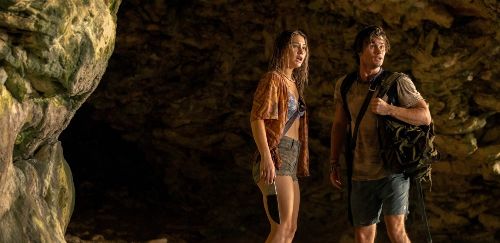In the third season of “Outer Banks” on Netflix, John B (Chase Stokes) and his friends go on a quest to find the legendary city of El Dorado. The story of the series says that 500 years ago, a king of the Guajiro people built El Dorado. As his death approached, the king didn’t want to just leave the city of gold to his kids. Instead, he made the test of the gnomon to see who was the smartest and give the treasure to that person. In the centuries after him, his children, conquistadors, knights, tribes, and even whole nations all failed.
El Dorado is where the gold that was on the shipwreck of the Royal Merchant and on the Cross of Saint Domingo came from. People who find the gold without passing the test are thought to be cursed. The crew of the San Jose, which brought the gold out, and the crew of the Royal Merchant died because of this. Even today, it seems like Ward died because he had the gold from those two ships. If you want to know if El Dorado’s treasure is real, we’ve got you covered.
Is El Dorado Real?
Artists have been inspired by stories about El Dorado (also spelled Eldorado) for more than 500 years. Many expeditions have been sent out to find it, but none of them have been completely successful. At the moment, most people think that El Dorado doesn’t exist. Where the myth came from is very different from what it turned into. At first, El Dorado was a man. This Spanish phrase means “the golden.” It comes from “El Hombre Dorado” (The Golden Man) or “El Rey Dorado” (The Golden King) (The Golden King).
In the 1600s, the Spanish colonists used these words to talk about a mythical tribal chief or king of the Muisca. The Muisca are an indigenous people and culture of the Altiplano Cundiboyacense in Colombia. According to Juan Rodriguez Freyle, whose chronicle “El Carnero” is the first piece of writing to include the original story, this “zipa” (tribal chief) covered himself in gold dust and took a ritual bath in Lake Guatavita. Freyle says that the ceremony was the new ruler’s coronation and calls the god that the Muisca people worship a demon.
In “The Quest of El Dorado,” poet, priest, and historian Juan de Castellanos, who was involved in Jiménez de Quesada’s fight with the Muisca, writes about a similar ceremony. The Muisca were one of the four great civilizations of the Americas before Europeans came. The other three were the Inca, the Aztecs, and the Maya. After it was shown that most of the stories about the Incan gold were true, many people started looking for El Dorado. As time went on, the story of El Dorado changed. What started as a person turned into a city, which turned into a kingdom, which turned into an empire.
Over the past 500 years, there have been many excavations in the places that are now Colombia, Venezuela, parts of Guyana, and northern Brazil. Several times, people near Bogotá tried to find gold by dredging Lake Guatavita, but the results were not always good. Eventually, the Colombian government made it illegal to do so.
Some treasure hunters thought that the legendary Lake Parime or Lake Parima was where El Dorado was. This includes the famous English explorer Sir Walter Raleigh, who tried to find the lake twice in the late 1590s but didn’t find it. His story says that he crossed the Orinoco River and got as far as Angostura, which is now called Ciudad Bolvar in Venezuela. He first became interested in this area after reading about Juan Martinez (likely Juan Martin de Albujar), who met the Carib people while exploring the Lower Orinoco in 1570 as part of Pedro de Silva’s expedition. Martinez said that he was taken to a city made of gold where the Caribs took care of him. When he got back, he didn’t know how to get back to the golden city.
Did Kalinago People Really Exist?
Yes, there were Kalinago people. In fact, they still live there and are the native people of the Caribbean’s Lesser Antilles. People from Kalinago are also called the Caribs or the Island Caribs. There is a good chance that they are related to the Mainland Caribs (Kalina) of South America, who are a big part of the other El Dorado myth.
The Spanish conquistadors said that the Kalinago ate their own people. Christopher Columbus was the first European to call these islands “Carib,” which is also the name of the sea that surrounds them. The Spanish probably called the Carib people who were hostile and the Arawak people who were friendly.
The Kalinago people used to have their own language, but around 1920, it died out. Even though the Spanish, English, and French were cruel to the Kalinago for hundreds of years, they can still be found in Dominica, Trinidad and Tobago, Saint Lucia, and Saint Vincent and the Grenadines, though their numbers are very low. The British made the Kalinago Territory in 1903, and it is a part of the island of Dominica.


